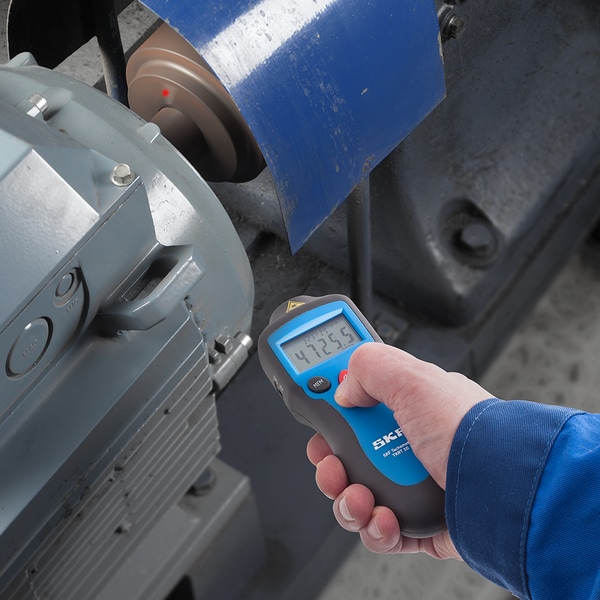Just how to Select the Right Tachometer for Your Car or Motorbike
Just how to Select the Right Tachometer for Your Car or Motorbike
Blog Article
The Significance of a Tachometer in Keeping An Eye On Engine Speed and Efficiency in Automotive Applications
In the world of auto design, the tachometer stands as a pivotal instrument in the chauffeur's toolbox, providing a direct home window into the inner workings of a vehicle's engine. Past its function as a plain gauge of changes per min (RPM), the tachometer serves as a critical device for enthusiasts and experts alike, offering real-time insights into engine performance and health and wellness.
Importance of Keeping Track Of Engine RPM
Monitoring engine RPM, or revolutions per minute, is a vital facet of vehicle upkeep and efficiency evaluation. Engine RPM straight associates with the speed at which the engine's crankshaft turns, showing exactly how rapidly the engine is running.
Additionally, checking engine RPM is essential for performance evaluation in racing and high-performance cars. In recap, monitoring engine RPM is not only essential for detecting issues but likewise for enhancing engine efficiency in various vehicle applications.

Benefits of Real-Time Information
In automobile applications, real-time information plays a vital role in offering immediate insights right into the efficiency and condition of the car. By continually keeping track of different specifications such as engine speed, temperature, fuel consumption, and extra, real-time data supplies numerous benefits that add to boosted effectiveness and safety and security on the road.
One significant advantage of real-time data is its capacity to alert drivers and specialists to any type of abnormalities or issues promptly. This aggressive approach allows fast identification of prospective troubles, allowing for prompt interventions to stop additional damage or breakdowns. Furthermore, real-time information facilitates performance optimization by giving instant feedback on driving habits and engine performance. Motorists can change their behavior in real-time based on this information to accomplish better gas economic climate and extend the life expectancy of their automobile.

Furthermore, real-time data plays an essential role in modern auto diagnostics, making it possible for technicians to swiftly identify and resolve malfunctions. This brings about reduced downtime, reduced maintenance expenses, and ultimately, boosted general vehicle integrity and durability (tachometer). By utilizing the power of real-time information, automotive stakeholders can make educated decisions that positively influence both the performance and durability of the automobile
Effect On Equipment Shifts
The tachometer plays a vital role in enhancing equipment changes by giving real-time engine speed information to the vehicle driver. try these out When coming close to the redline on the tachometer, it signifies the driver to upshift to stop over-revving the engine and creating prospective damage.
Furthermore, the tachometer aids in achieving smoother gear shifts, specifically in manual transmissions. By keeping an eye on engine speed, motorists can carry out gear shifts at the optimal RPM range, lowering jerking movements and decreasing endure the transmission components. This precision on duty modifications not just improves driving convenience yet additionally adds to fuel performance.
Enhancing Gas Efficiency
Provided the essential function the tachometer plays in maximizing gear changes for efficiency and engine health and wellness, it straight adds to making best use of fuel efficiency in auto applications. By offering real-time responses on engine rate, the tachometer helps vehicle drivers in keeping one of the most effective RPM range for gas economy. When motorists continually monitor the tachometer and adjust their driving routines appropriately, they can avoid unnecessary fuel intake caused by over-revving or hauling the engine.
Moreover, the tachometer helps motorists determine the most fuel-efficient gear to be in at any type of provided moment, avoiding the engine from working tougher than essential. This is especially essential throughout velocity and travelling, where being in the best gear can substantially influence gas efficiency. Furthermore, the tachometer can notify chauffeurs to potential mechanical problems that might be negatively impacting gas economic situation, such as a sliding clutch or a clogged up air filter. Finally, the tachometer offers as an important device in enhancing gas efficiency by advertising ideal driving routines and determining locations for renovation in the automobile's performance.

Making The Most Of Engine Longevity
The tachometer's role in checking engine rate and performance is important in check my reference making certain the durability of auto engines. Keeping track of the tachometer allows vehicle drivers to remain within the recommended RPM array for their lorry, avoiding unneeded stress on the engine and prolonging its life expectancy.

Conclusion
In final thought, the tachometer plays a critical function in checking engine rate and efficiency in vehicle applications. By supplying real-time information on RPM, it allows for efficient gear changes, enhanced fuel effectiveness, and made the most of engine durability. This device is important for maintaining optimal engine efficiency and guaranteeing the general performance of a lorry.
Report this page